"ILO"相关数据
更新时间:2021-12-312021年世界就业和社会展望
Technological innovation is transforming every part of our lives. The ability toquickly and cheaply exchange large amounts of data and information has laid thefoundations for the rise of the digital economy and digital labour platforms.In bothdeveloped and developing countries businesses and consumers have embracedthis transformation, as services and goods are delivered in ways that are cheaperand more convenient.Digitallabour platforms are now part of our everyday lives.This transformation extends to the world of work. Digital labour platforms offer newmarkets for businesses and more income-generating opportunities for workers,including those who were previously outside the labour market.Such platforms areleading to changes not just to the organization of enterprises and work processesbut in many cases to the relationship between workers and businesses as well.lt is widely considered that the cOvID-19 pandemic has accelerated changes thatwere already under way, both in society and at work.These include the expanded useof digital platforms and related technological innovations like cloud computing andthe use of big data and algorithms.The result has been innovative ways of working,and flexibility for both workers and businesses. The remote working arrangementsadopted by many during the past year have brought a rise in e-commerce, e-servicesand online freelance work.For many who lost their jobs, in both developing and de-veloped countries, digital labour platforms have offered opportunities to earn someincome.Many businesses have relied on digitallabour platforms to keep operating,reach new markets and reduce costs.
But there are challenges.This new business model allows platforms to organize workwithout having to invest in capital assets or to hire employees.Instead, they mediatebetween the workers who perform the tasks and clients,and manage the entirework process with algorithms. Workers on digital labour platforms often struggle tofind sufficient well-paid work to earn a decentincome, creating a danger of workingpoverty. Many do not have access to social protection, which is particularly con-cerning during a pandemic. They are frequently unable to engage in the collectivebargaining that would allow them to have these and other issues addressed.
【更多详情,请下载:2021年世界就业和社会展望】

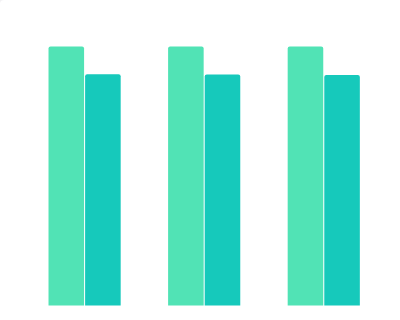 1990-2017年中国15-64岁人口按性别的劳动力参与率该统计数据包含了1990-2017年中国15-64岁人口按性别的劳动力参与率。2017年中国15-64岁男性人口的劳动力参与率为88.848%、女性为79.389%。1990-2017年发布时间:2018-11-26
1990-2017年中国15-64岁人口按性别的劳动力参与率该统计数据包含了1990-2017年中国15-64岁人口按性别的劳动力参与率。2017年中国15-64岁男性人口的劳动力参与率为88.848%、女性为79.389%。1990-2017年发布时间:2018-11-26 1990-2017年中国15-64岁人口的劳动力参与率该统计数据包含了1990-2017年中国15-64岁人口的劳动力参与率。2017年中国15-64岁人口的劳动力参与率为76.049%1990-2017年发布时间:2018-11-26
1990-2017年中国15-64岁人口的劳动力参与率该统计数据包含了1990-2017年中国15-64岁人口的劳动力参与率。2017年中国15-64岁人口的劳动力参与率为76.049%1990-2017年发布时间:2018-11-26 1990-2017年中国15及15岁以上人口的劳动力参与率该数据包含了1990-2017年中国15及15岁以上人口的劳动力参与率。199015及15岁以上人口的劳动力参与率为79.1330032348633%。1990-2017年发布时间:2018-11-26
1990-2017年中国15及15岁以上人口的劳动力参与率该数据包含了1990-2017年中国15及15岁以上人口的劳动力参与率。199015及15岁以上人口的劳动力参与率为79.1330032348633%。1990-2017年发布时间:2018-11-26 1990-2017年中国15及15岁以上人口按性别的劳动力参与率该统计数据包含了1990-2017年中国15及15岁以上人口按性别的劳动力参与率。2017年中国15及15岁以上男性人口的劳动力参与率为47.681%,女性人口的劳动力参与率为45.300999%。1990-2017年发布时间:2018-11-26
1990-2017年中国15及15岁以上人口按性别的劳动力参与率该统计数据包含了1990-2017年中国15及15岁以上人口按性别的劳动力参与率。2017年中国15及15岁以上男性人口的劳动力参与率为47.681%,女性人口的劳动力参与率为45.300999%。1990-2017年发布时间:2018-11-26 1991-2017年中国失业率该统计数据包含了1991-2017年中国失业率。2017年中国失业率为4.675%1991-2017年发布时间:2018-11-26
1991-2017年中国失业率该统计数据包含了1991-2017年中国失业率。2017年中国失业率为4.675%1991-2017年发布时间:2018-11-26 1991-2017年中国女性弱势群体就业占比该统计数据包含了1991-2017年中国女性弱势群体就业占比。2017年中国女性弱势群体的失业率为34.485001%。1991-2017年发布时间:2018-11-26
1991-2017年中国女性弱势群体就业占比该统计数据包含了1991-2017年中国女性弱势群体就业占比。2017年中国女性弱势群体的失业率为34.485001%。1991-2017年发布时间:2018-11-26 1991-2017年中国男性弱势群体就业占比该统计数据包含了1991-2017年中国男性弱势群体就业占比。2017年中国男性弱势群体就业占比为31.824%。1991-2017年发布时间:2018-11-26
1991-2017年中国男性弱势群体就业占比该统计数据包含了1991-2017年中国男性弱势群体就业占比。2017年中国男性弱势群体就业占比为31.824%。1991-2017年发布时间:2018-11-26 1991-2017年中国弱势群体就业占比该统计数据包含了1991-2017年中国弱势群体就业占比。2017年中国弱势群体就业占比为32.99%。1991-2017年发布时间:2018-11-26
1991-2017年中国弱势群体就业占比该统计数据包含了1991-2017年中国弱势群体就业占比。2017年中国弱势群体就业占比为32.99%。1991-2017年发布时间:2018-11-26 1991-2017年中国女性失业率该统计数据包含了1991-2017年中国女性失业率。2017年的中国女性失业率为4.237%。1991-2017年发布时间:2018-11-26
1991-2017年中国女性失业率该统计数据包含了1991-2017年中国女性失业率。2017年的中国女性失业率为4.237%。1991-2017年发布时间:2018-11-26 1991-2017年中国男性失业率该统计数据包含了1991-2017年中国男性失业率。2017年中国男性失业率为5.014%。1991-2017年发布时间:2018-11-26
1991-2017年中国男性失业率该统计数据包含了1991-2017年中国男性失业率。2017年中国男性失业率为5.014%。1991-2017年发布时间:2018-11-26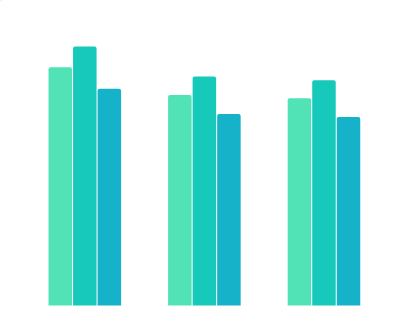 1991-2017年中国年轻群体失业率该统计数据包含了1991-2017年中国年轻群体失业率。2017年中国15-24岁人口失业率为10.8%。1991-2017年发布时间:2018-11-26
1991-2017年中国年轻群体失业率该统计数据包含了1991-2017年中国年轻群体失业率。2017年中国15-24岁人口失业率为10.8%。1991-2017年发布时间:2018-11-26 1991-2017年中国自营就业人口占比该统计数据包含了1991-2017年中国自营就业人口占比。2017年中国自营就业人口占比为36.353001%。1991-2017年发布时间:2018-11-26
1991-2017年中国自营就业人口占比该统计数据包含了1991-2017年中国自营就业人口占比。2017年中国自营就业人口占比为36.353001%。1991-2017年发布时间:2018-11-26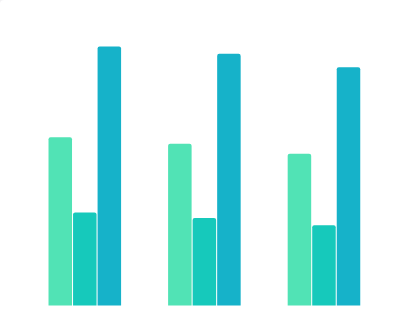 1991-2017年中国无报酬家庭劳动者的情况该数据包含了1991-2017年中国无报酬家庭劳动者的情况。1991无报酬家庭劳动者总比例为37.7229995727539%,男性无报酬家庭劳动者总比例为20.8390007019043%,女性无报酬家庭劳动者总比例为58.1020011901855%。1991-2017年发布时间:2018-11-26
1991-2017年中国无报酬家庭劳动者的情况该数据包含了1991-2017年中国无报酬家庭劳动者的情况。1991无报酬家庭劳动者总比例为37.7229995727539%,男性无报酬家庭劳动者总比例为20.8390007019043%,女性无报酬家庭劳动者总比例为58.1020011901855%。1991-2017年发布时间:2018-11-26 1990-2017年中国15-24岁人口的劳动力参与率该数据包含了1990-2017年中国15-24岁人口的劳动力参与率。199015-24岁人口的劳动力参与率为78.3310012817383%。1990-2017年发布时间:2018-11-26
1990-2017年中国15-24岁人口的劳动力参与率该数据包含了1990-2017年中国15-24岁人口的劳动力参与率。199015-24岁人口的劳动力参与率为78.3310012817383%。1990-2017年发布时间:2018-11-26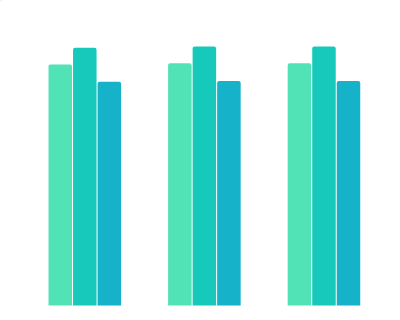 1991-2017年中国适龄人口就业情况该统计数据包含了1991-2017年中国适龄人口就业情况。1998年总人口就业比率为65.7089996337891%。1991-2017年发布时间:2018-11-26
1991-2017年中国适龄人口就业情况该统计数据包含了1991-2017年中国适龄人口就业情况。1998年总人口就业比率为65.7089996337891%。1991-2017年发布时间:2018-11-26 2018年全球G20各国15岁以上女性劳动参与率的情况该统计数据包含了2018年全球G20各国15岁以上女性劳动参与率的情况。其中中国15岁以上女性劳动参与率为61%。2018年发布时间:2020-12-02
2018年全球G20各国15岁以上女性劳动参与率的情况该统计数据包含了2018年全球G20各国15岁以上女性劳动参与率的情况。其中中国15岁以上女性劳动参与率为61%。2018年发布时间:2020-12-02 2021年全球女性劳动力疫情前后占比变化该统计数据包含了2021年全球女性劳动力疫情前后占比变化。其中土耳其的女性劳动力占比在疫情之后下降最多。2021年发布时间:2021-04-30
2021年全球女性劳动力疫情前后占比变化该统计数据包含了2021年全球女性劳动力疫情前后占比变化。其中土耳其的女性劳动力占比在疫情之后下降最多。2021年发布时间:2021-04-30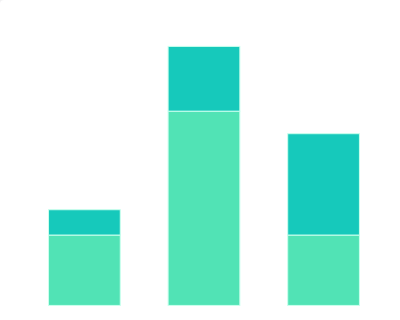 2017年中国和印度的女性经济权各项指标情况该统计数据包含了2017年中国和印度的女性经济权各项指标情况。中国的女性劳动力占全球女性劳动力的25%,女性劳动参与率为69%。2017年发布时间:2020-08-21
2017年中国和印度的女性经济权各项指标情况该统计数据包含了2017年中国和印度的女性经济权各项指标情况。中国的女性劳动力占全球女性劳动力的25%,女性劳动参与率为69%。2017年发布时间:2020-08-21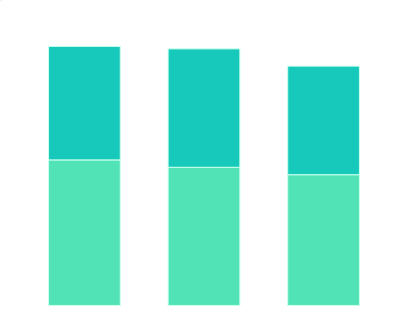 2020年全球各地区最低工资劳动者和高于最低工资劳动者中的女性比例该统计数据包含了2020年全球各地区最低工资劳动者和高于最低工资劳动者中的女性比例。其中,除东欧外的欧洲有59%接受最低工资及以下的人群为女性。2020年发布时间:2021-01-14
2020年全球各地区最低工资劳动者和高于最低工资劳动者中的女性比例该统计数据包含了2020年全球各地区最低工资劳动者和高于最低工资劳动者中的女性比例。其中,除东欧外的欧洲有59%接受最低工资及以下的人群为女性。2020年发布时间:2021-01-14 2000-2025年世界童工变化趋势和预测该统计数据包含了2000-2025年世界童工变化趋势和预测。预测2025年有121百万童工。2000-2025年发布时间:2020-06-12
2000-2025年世界童工变化趋势和预测该统计数据包含了2000-2025年世界童工变化趋势和预测。预测2025年有121百万童工。2000-2025年发布时间:2020-06-12





